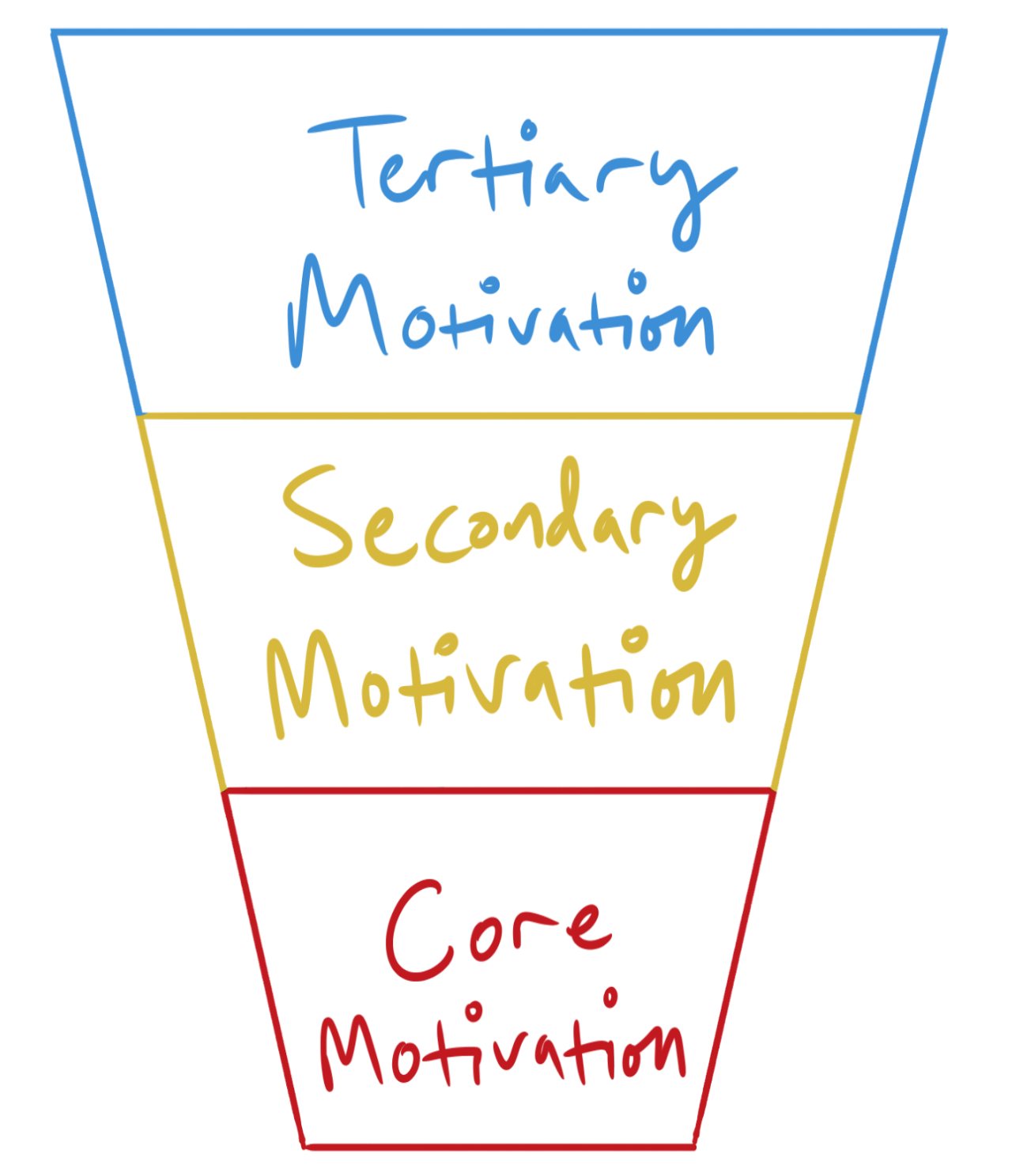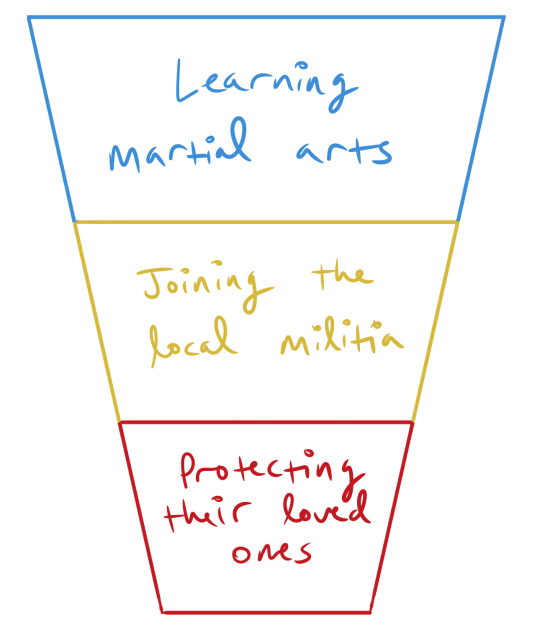@AJ
Greetings, whoever is reading this! Lately I’ve been thinking a lot about character motivations and what it means for a character to be compelled to do something plot-relevent. So for your convenience and reference, I’ve put together a handy dandy chart explaining how to construct character motivation.
Note: This is just the way I’m most comfortable with, and is not the definitive way of doing this. If you have a different method for character motivation, great! I’m just here to share how I personally do it.
So here’s what I call the Building Block Method™

(YES I KNOW I COULD’VE SAID PRIMARY MOTIVATION RATHER THAN CORE BUT I DIDN’T WANT TO, MY CHART, MY RULES, BITE ME)
First up, we have Core Motivation, the central reason behind what your character does what they do. It could be anything from “I want to protect humanity” to “I want to be the best Pokemon trainer ever” to “I just wanna go home and sleep”. Whatever it is, it is the single most important thing to your character. Every major (or even minor) decision they make is made with the Core in mind. Your character’s main traits should stem from their Core Motivation, or vice versa.
The Secondary Motivation is a major commitment that relates directly to the Core. In other words, this is the main thing they do to achieve Core.
The Tertiary Motivation is what they do to achieve or validate Secondary. This still has ties to Core, but might relate more to Secondary when it comes to the details.
For example, if someone’s Core Motivation was “Protect the Kingdom”, their Secondary Motivation might be “Save the Princess”; subsequently, their Tertiary Motivation might be “Learn to fight Dragons, specifically the Dragon that is guarding the Princess”.
Okay! Situation time! How do we assimilate this method into a story?
Let’s pretend that Character A lives in a war-torn, post-apocalyptic society where they are in constant danger from outside forces. A is brave and determined (core traits) and wants nothing more than to protect their loved ones from harm. This is their Core Motivation, and the reason why they do anything in this story.
A figures that the best way they can achieve their Core is by enlisting in the local militia and fighting alongside others who share similar motivations. They are committed to this action, and it thereby becomes their Secondary Motivation.
But wait! A doesn’t know anything about fighting! Obviously, the leaders of the militia reject them, and A vows to learn everything they can about martial arts so that they can one day join the militia. This is their Tertiary Motivation, and most likely the arc that the plot will most explore.
Their chart might look something like this:

“Hey, this sounds great and all, but what if something happens to their Core Motivation?”
I’m glad you asked, friendo. When your character’s Core Motivation is damaged or lost, that is when your character is having an internal crisis. This is the main reason why I call this the Building Block Method™: remove the bottom block and all the others topple over. They depend on the bottom (or Core) block.
Going back to Character A, let’s assume that they’ve mastered some form of fighting and have been accepted into the militia. But somehow in the middle of a fight, their mom dies in a mildly preventable way. A has failed to protect a loved one, even though they completed both the Secondary and Tertiary Motivations. This may cause them to spiral into depression or give up on protecting anyone ever again. Their Core Motivation has been damaged to the point of destruction. However, it’s very likely that their Core can be repaired with the help of your supporting cast.
But let’s take this one step further. Say that Character B’s Core was to be just like their father, who was supposedly the best guy ever, Later, B finds out that their father was secretly evil and they’ve been unknowingly hurting the people they thought they were helping. B’s core reason for doing what they do has been proven to be the wrong thing to do, and this crushes them. B’s whole life has turned out to be a lie, and they go into full internal-crisis mode. In this situation, the Core is almost always beyond saving, supporting cast or no. It is now up to Character B to construct a new set of motivations for themselves in order for the story to progress.
However, it doesn’t always have to be this dramatic. Your character may start with a Core Motivation like “I want to move to Paris”, but as the story progresses, they find that staying home to support their aging grandmother has become more important to them. I like to call this phenomenon Core Evolution.
Another thing I should mention is the fact that you simply cannot make anyone do anything unless they want to do it, whether that be by bribery or threats or what have you. If your character has been put into a situation where they are being blackmailed or otherwise coerced to do something, think about what it would take for them to do that. Could it be that if they don’t give the bad guys the treasure, their best friend will be killed? (”I want to protect my loved ones”) Are they themselves going to to get hurt if they don’t give up the missile codes? (”I want to survive”). Think about how much the situation relates to or challenges your character’s Core, and to what lengths the antagonist can go to before your character breaks.
There’s a lot more I could say about character construction and how it relates to your plot, but I think this post has gotten long enough by now. Hope this helps!